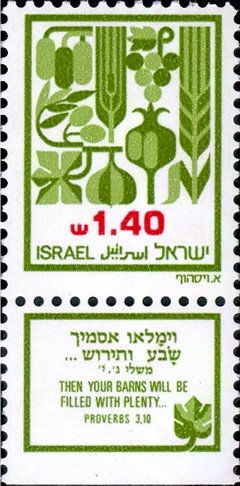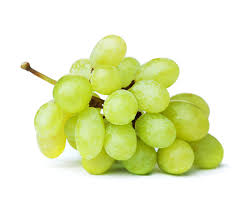Stamp with Collectible Margin: The Seven Spices of Canaan (Israel 1982)
The Seven Spices of Canaan (Israel 1982)
22 June (Israel ) within release The Seven Spices Definitives goes into circulation Stamp with Collectible Margin The Seven Spices of Canaan face value 1.40 Israeli sheqel
| Stamp with Collectible Margin The Seven Spices of Canaan in catalogues | |
|---|---|
| Michel: | Mi: IL 885T |
| Stamp Number: | Sn: IL 809T |
| Yvert et Tellier: | Yt: IL 828T |
| Stanley Gibbons: | Sg: IL 843T |
Stamp with Collectible Margin is square format.
Stamp with Collectible Margin The Seven Spices of Canaan it reflects the thematic directions:
Agriculture is the cultivation and breeding of animals, plants and fungi for food, fiber, biofuel, medicinal plants and other products used to sustain and enhance human life.[1] Agriculture was the key development in the rise of sedentary human civilization, whereby farming of domesticated species created food surpluses that nurtured the development of civilization. The study of agriculture is known as agricultural science. The history of agriculture dates back thousands of years, and its development has been driven and defined by greatly different climates, cultures, and technologies. Industrial agriculture based on large-scale monoculture farming has become the dominant agricultural methodology.
A cereal is a grass cultivated for its edible grain. Cereals are the world's largest crops, and are therefore staple foods. They include rice, wheat, rye, oats, barley, millet, and maize. Edible grains from other plant families, such as buckwheat and quinoa are pseudocereals. Most cereals are annuals, producing one crop from each planting, though rice is sometimes grown as a perennial. Winter varieties are hardy enough to be planted in the autumn, becoming dormant in the winter, and harvested in spring or early summer; spring varieties are planted in spring and harvested in late summer. The term cereal is derived from the name of the Roman goddess of grain crops and fertility of grain crops and fertility
A grape is a fruit, botanically a berry, of the deciduous woody vines of the flowering plant genus Vitis. Grapes are a non-climacteric type of fruit, generally occurring in clusters.
Flora is the plant life occurring in a particular region or time, generally the naturally occurring or indigenous—native plant life. The corresponding term for animal life is fauna. Flora, fauna and other forms of life such as fungi are collectively referred to as biota. Sometimes bacteria and fungi are also referred to as flora, as in the terms gut flora or skin flora.




